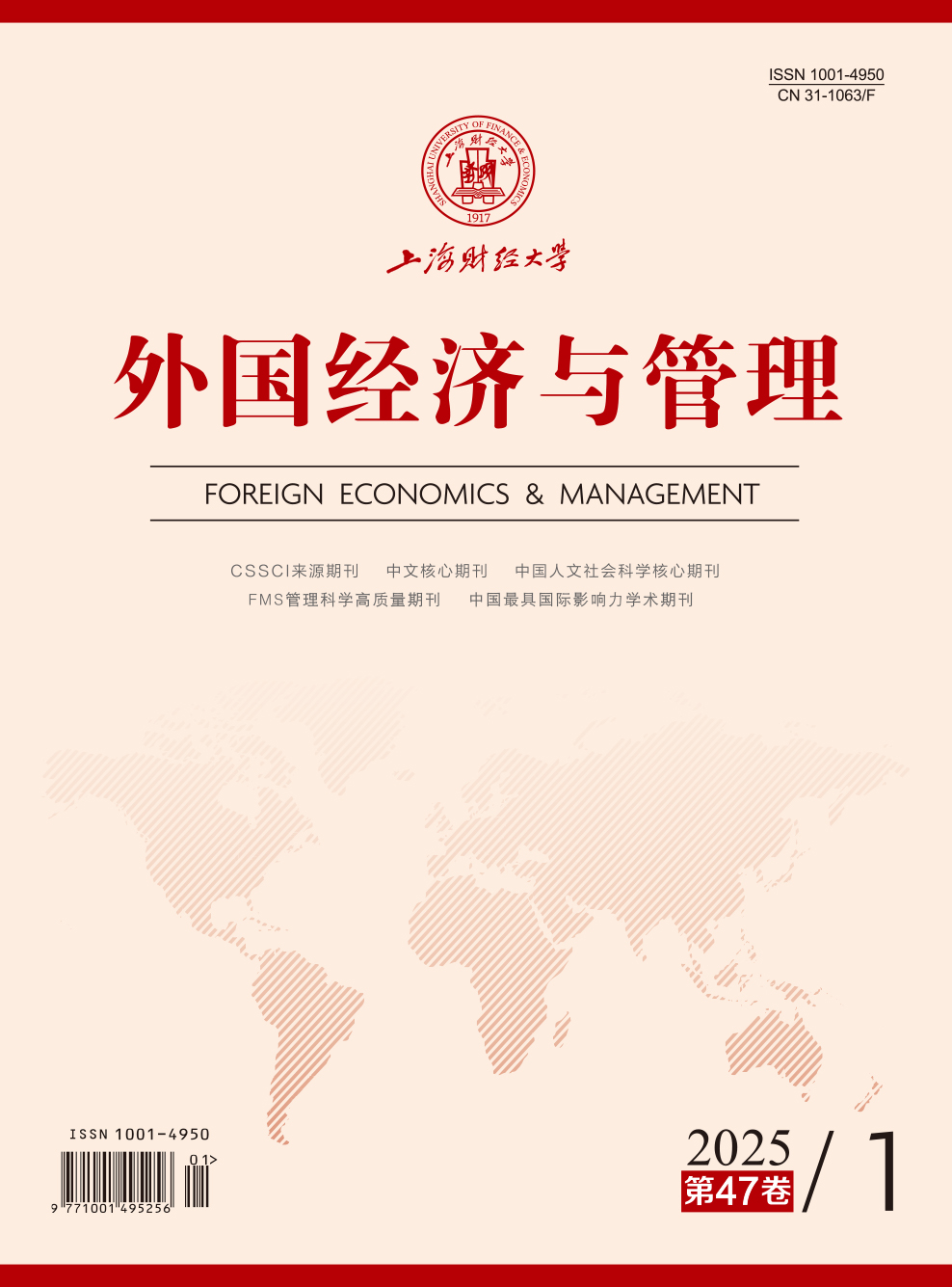投资“赛道”的选择是公司创业投资活动首先要考虑的问题,并且对企业的战略收益具有重要影响。本文基于企业行为理论,检验财务、创新双重目标期望逆差对公司创业投资行业选择的影响,并将投资单元的结构特征,即自主权纳入理论框架中,进一步探讨投资单元组织结构对上述关系所起的调节作用。通过对2008—2018年间我国沪深股市上市公司所控制的投资单元的实证分析,得到以下结论:随着财务和创新期望逆差的增加,投资单元跨行业投资倾向也会升高。投资单元自主权提高了投资单元对财务绩效反馈的注意力,从而增强了财务期望逆差与跨行业投资之间的正向关系。同时,投资单元自主权强化了投资经理对财务目标相对于创新目标具有更高优先级的认识,因此在财务绩效出现下滑时,相较于低自主权的投资单元,高自主权的投资单元对创新目标的响应程度更弱。本文同时考虑财务和创新双重目标,拓展了企业行为理论,对公司创业投资的组织结构设计也具有启示意义。
双重目标期望逆差与公司创业投资行为——基于组织结构的视角
摘要
参考文献
1 董静, 谢韵典. 绩效反馈与公司风险投资的行业选择[J]. 南开管理评论, 2022, 25(2): 101-112. DOI:10.3969/j.issn.1008-3448.2022.02.011
3 郭蓉, 文巧甜. 业绩反馈与公司创业投资行为关系——来自中国上市公司的数据检验[J]. 系统管理学报, 2019, 28(6): 1041-1056. DOI:10.3969/j.issn.1005-2542.2019.06.005
5 加里·杜什尼茨基, 余雷, 路江涌. 公司创业投资: 文献述评与研究展望[J]. 管理世界, 2021, 37(7): 198-216. DOI:10.3969/j.issn.1002-5502.2021.07.014
9 Asel P, Park H D, Velamuri S R. Creating values through corporate venture capital programs: The choice between internal and external fund structures[J]. The Journal of Private Equity, 2015, 19(1): 63-72. DOI:10.3905/jpe.2015.19.1.063
10 Choi J, Rhee M, Kim Y C. Performance feedback and problemistic search: The moderating effects of managerial and board outsiderness[J]. Journal of Business Research, 2019, 102: 21-33. DOI:10.1016/j.jbusres.2019.04.039
11 Cohen W M, Levinthal D A. Absorptive capacity: A new perspective on learning and innovation[J]. Administrative Science Quarterly, 1990, 35(1): 128-152. DOI:10.2307/2393553
12 Cyert R M, March J G. A behavioral theory of the firm[M]. Englewood Cliffs: Prentice Hall, 1963.
13 Dushnitsky G, Shaver J M. Limitations to interorganizational knowledge acquisition: The paradox of corporate venture capital[J]. Strategic Management Journal, 2009, 30(10): 1045-1064. DOI:10.1002/smj.781
14 Dushnitsky G, Yu L. Why do incumbents fund startups? A study of the antecedents of corporate venture capital in China[J]. Research Policy, 2022, 51(3): 104463. DOI:10.1016/j.respol.2021.104463
15 Gaba V, Bhattacharya S. Aspirations, innovation, and corporate venture capital: A behavioral perspective[J]. Strategic Entrepreneurship Journal, 2012, 6(2): 178-199. DOI:10.1002/sej.1133
16 Gaba V, Greve H R. Safe or profitable? The pursuit of conflicting goals[J]. Organization Science, 2019, 30(4): 647-667. DOI:10.1287/orsc.2018.1280
17 Gaba V, Joseph J. Corporate structure and performance feedback: Aspirations and adaptation in M-form firms[J]. Organization Science, 2013, 24(4): 1102-1119. DOI:10.1287/orsc.1120.0788
18 Greve H R. A Behavioral theory of firm growth: Sequential attention to size and performance goals[J]. Academy of Management Journal, 2008, 51(3): 476-494. DOI:10.5465/amj.2008.32625975
19 Heckman J J. Sample selection bias as a specification error[J]. Econometrica, 1979, 47(1): 153-161. DOI:10.2307/1912352
20 Joseph J, Klingebiel R, Wilson A J. Organizational structure and performance feedback: Centralization, aspirations, and termination decisions[J]. Organization Science, 2016, 27(5): 1065-1083. DOI:10.1287/orsc.2016.1076
21 Keil T, Maula M, Schildt H, et al. The effect of governance modes and relatedness of external business development activities on innovative performance[J]. Strategic Management Journal, 2008, 29(8): 895-907. DOI:10.1002/smj.672
22 Lee S U, Park G, Kang J N. The double-edged effects of the corporate venture capital unit’s structural autonomy on corporate investors’ explorative and exploitative innovation[J]. Journal of Business Research, 2018, 88: 141-149. DOI:10.1016/j.jbusres.2018.01.049
23 Martínez-Noya A, García-Canal E. Innovation performance feedback and technological alliance portfolio diversity: The moderating role of firms’ R&D intensity[J]. Research Policy, 2021, 50(9): 104321. DOI:10.1016/j.respol.2021.104321
24 Mazzelli A, Nason R S, De Massis A, et al. Causality rules: Performance feedback on hierarchically related goals and capital investment variability[J]. Journal of Management Studies, 2019, 56(8): 1630-1654. DOI:10.1111/joms.12432
25 Ocasio W. Towards an attention-based view of the firm[J]. Strategic Management Journal, 1997, 18(S1): 187-206.
26 Posen H E, Keil T, Kim S, et al. Renewing research on Problemistic search—A review and research agenda[J]. Academy of Management Annals, 2018, 12(1): 208-251. DOI:10.5465/annals.2016.0018
27 Shinkle G A. Organizational aspirations, reference points, and goals: Building on the past and aiming for the future[J]. Journal of Management, 2012, 38(1): 415-455. DOI:10.1177/0149206311419856
28 Siegel R, Siegel E, MacMillan I C. Corporate venture capitalists: Autonomy, obstacles, and performance[J]. Journal of Business Venturing, 1988, 3(3): 233-247. DOI:10.1016/0883-9026(88)90017-1
29 Souitaris V, Zerbinati S. How do corporate venture capitalists do deals? An exploration of corporate investment practices[J]. Strategic Entrepreneurship Journal, 2014, 8(4): 321-348. DOI:10.1002/sej.1178
30 Titus Jr V, Parker O, Covin J. Organizational aspirations and external venturing: The contingency of entrepreneurial orientation[J]. Entrepreneurship Theory and Practice, 2020, 44(4): 645-670. DOI:10.1177/1042258719838473
引用本文
谢韵典, 董静, 李辰. 双重目标期望逆差与公司创业投资行为——基于组织结构的视角[J]. 外国经济与管理, 2025, 47(1): 70-87.
导出参考文献,格式为:





 3797
3797  5221
5221

